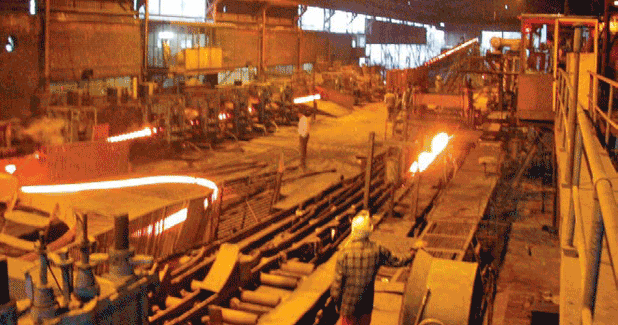
Poor Assessment of Triggers
World Steel Association states that the global steel demand did increase by 0.2 per cent to 1,501 mt in 2016 after a contraction of -3 per cent in 2015. In 2017, it expects global steel demand to grow by 0.5 per cent and reach 1,510 mt. The net conclusion - steel industry is reeling under a weak demand led tailspin and is further compounded by oversupply situation from select geographies. This is not an easy situation and could take 3-4 years more to improve unless engineered pro-actively.
Around the world steel industry fortunes are directly linked to the capex plans of industry, infrastructure investments, housing, railways, automotive sector performance etc. While government spend on capex will be high, it is the private sector capex spend that allows for steel suppliers to nurse acceptable margins. The private sector capex and investment in core sector around the world is extremely weak at this point in time and is going through a certain rebalancing like never before.
India, the third-largest producer and a top consumer of steel is impacted too. Steel industry accounts for almost 2 per cent of India's GDP. This industry also has the highest debt exposure with local financial institutions.
A variety of issues have decelerated the Indian steel industry:
Cheap imports: India has been flooded with cheap imports for a very long time, primarily from China and Korea. The government imposed a provisional safeguard import duty for 200 days on some steel products in 2015 and subsequently set up a 'minimum import price' to protect the local industry. This helped the situation, but only marginally.
Low capacity utilisation: Easy availability of cheaper imported steel products, high input cost due to soaring raw material prices and availability of ore and coal, reduced operating margins of the business. This impacted the capacity utilisation which went down to 65-75 per cent capacity levels.
Lack of adequate capital and high interest cost burden: The steel industry needs adequate capital for capacity building, investments in upgradation and technology to stay competitive, both domestically and globally. This was unfortunately not available to the industry.
Small steel mills: In the early years beginning 2003, a lot of small steel mills were set up across the country. Steel is a long gestation business and profits are realised after a significant sustenance. These small steel mills had marginal holding power and turned over their head with worsening business situation.
The national policy had to consider all these issues and the global situation to articulate a new direction for the steel industry.
The policy is short on any concrete measures that could help the immediate situation.
While in the long term it will aid in capacity addition, but as John Keynes says, 'in the long term we are all dead'.
Let's evaluate what the policy missed:
Root cause of trigger: My friend Jayantha Sampath has this rustic yet erudite way of asking, 'What is the trigger?' The government has actually missed on subsuming all the triggers in the policy. The big triggers should have been on improving demand for steel, improving consistency and input costs of raw material supplies, creating a pipeline for capital. The policy instead focusses on increasing the capacity of steel production by almost three times over the next 14 years. The current capacity utilisation of 65-75 per cent should have been a trigger to set out steps on improving demand. There is talk of an initiative to make it mandatory for local projects to buy local steel. While it is a welcome initiative, its shelf-life may be limited since it is a protectionist plan.
Steep trajectory for performance improvement: From a best cost steel producer in 2012, India ($340/tonne) has now become a high cost ($420/tonne) producer! The completive advantage is fully eroded. The policy needed to have a focused approach on freight challenges, energy tariff improvement, resolving raw material supply and cost issues. It does not help the overall situation if most new projects will come up on the coastal belt. What about the existing 122 mt capacity? How are they going to benefit from the policy? There is no deep thinking on improvement of competitiveness. The local steel industry requires incubation today but on a different pedestal. Protection for the industry, focused policy on mining, and capital allocation plans will help the industry improve their performance in the immediate short term. When most countries have begun looking inward, why not India?
Balance the beast: It would have been a great idea if the government encouraged a consolidation of the steel industry before any further capacity addition. There are a lot of steel mills that are languishing and in serious debt. If these capacities can be absorbed by some 'healthy' players it could be a 'win-win' situation for both. Some amount of consolidation should be encouraged by involving concerned financial institutions. The government's immediate policy focus has to be on improving capacity utilisation to the robust levels of 90 per cent.
The National Steel Policy 2017 has missed a trick or two. It has not conceived all the triggers and is therefore a bit off target.
The author is Chief Executive Officer, Feedback Business Consulting Services.


 +91-22-24193000
+91-22-24193000 Subscriber@ASAPPinfoGlobal.com
Subscriber@ASAPPinfoGlobal.com